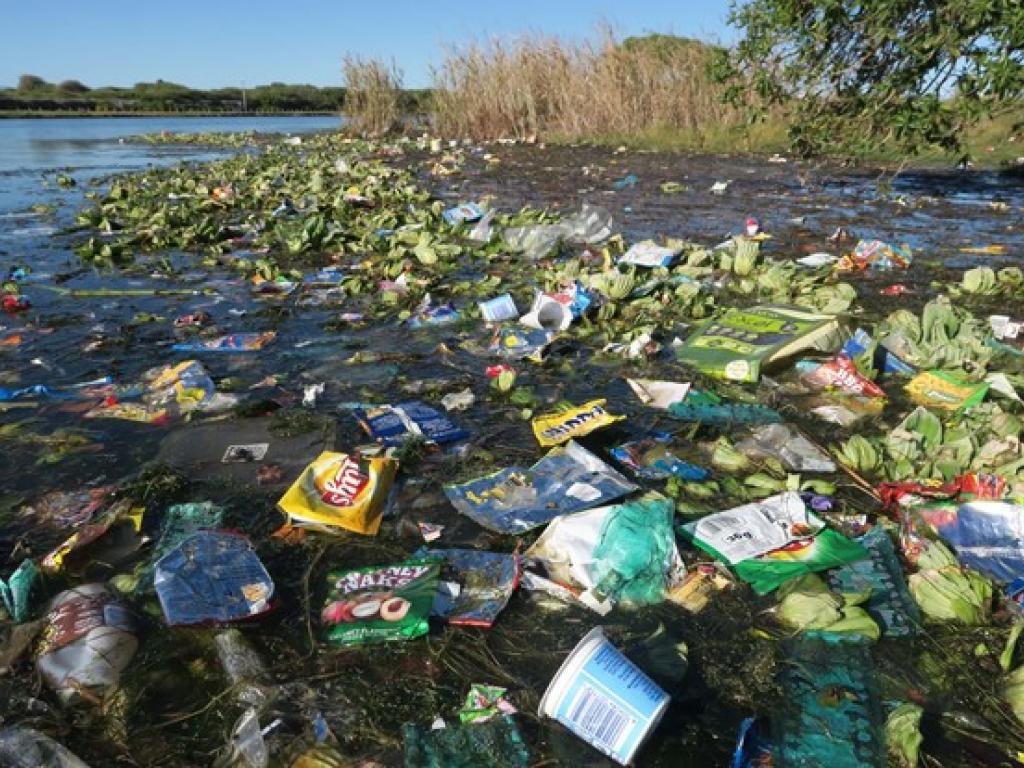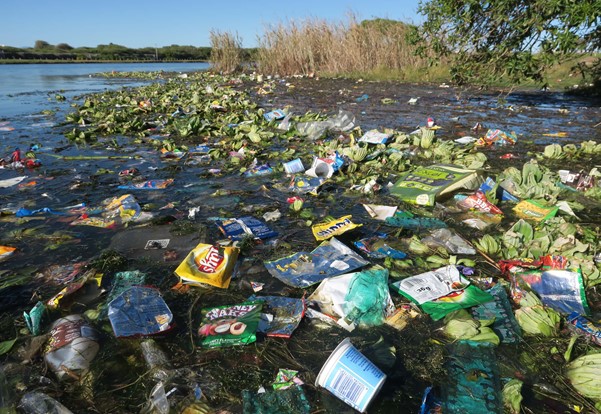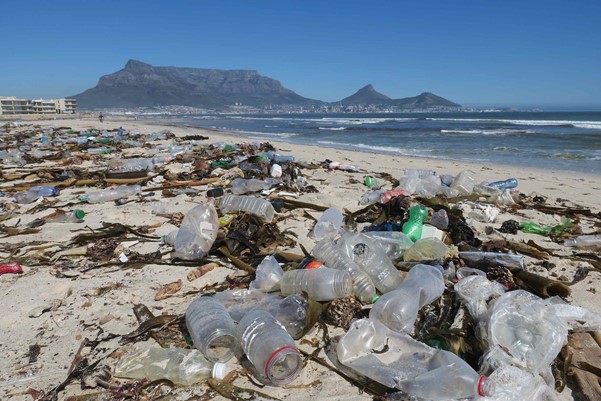Study finds that most plastic litter in Cape Flats rivers washes ashore close to river mouths


Litter in Zandvlei, waiting to be washed into False Bay (Photo: P Ryan)
- High litter loads occur in many urban rivers in South Africa
- Riverine litter washes into the sea, contributing to marine pollution
- This study shows that most litter entering False Bay washes ashore near river mouths
- Cleaning beaches, especially close to river mouths, will greatly reduce plastic pollution
Despite mounting concern about the large amounts of plastic litter entering the sea from land-based sources, there is surprisingly little information on how plastic travels from rivers into the sea. Oceanographic models and data from satellite-tracked weather buoys provide good understanding of the dispersal of floating plastic at sea, but the complex interactions of waves and tides make it much harder to predict the behaviour of plastic close to the coast. It is particularly important to address this knowledge gap because we need to understand the fate of plastic litter entering the sea.
Researchers from the University of Cape Town’s FitzPatrick Institute of African Ornithology recorded the amounts of litter washing ashore along 2.4 km of sandy beach on the northern shore of False Bay, Cape Town. The study was conducted from April to June 2020, during the initial COVID-19 lockdown, when beaches were closed to beach goers. As a result, all litter arriving on the beach during this time washed ashore.
They found that when the Zandvlei estuary was closed, litter washed ashore more or less evenly along the coast, with only a slight concentration in Muizenberg corner, presumably due to local currents in False Bay. However, when Zandvlei was opened to the sea for the first winter storm, litter was concentrated within a few hundred metres of the estuary mouth. Fitztitute Director, Professor Peter Ryan says “We were surprised by how little litter from the vlei dispersed more than 500 m from the estuary mouth.”
To get an idea of the proportion of litter from the vlei washing ashore, they deployed marked plastic and wood blocks where the river entered the sea. On a falling tide, 99% of blocks were recovered from the beach close to the river mouth. On a rising tide, most blocks were carried back into Zandvlei, where they travelled up to 1.2 km inland. Ryan says “It seems that most litter from rivers entering False Bay wash ashore. This is encouraging, because it means that by cleaning beaches we can prevent most of the urban litter from getting into the sea.”

Large amounts of litter washed ashore on Milnerton Beach, near the mouth of Rietvlei, following a winter storm (Photo: P Ryan)
The study builds on another paper published by Ryan and his colleagues in 2020 showing that superficial, large litter items – the kinds of things that can easily be collected by manual beach clean-ups – account for more than 90% of the mass of plastic on a remote beach in the West Coast National Park. Microplastics, and especially microfibres, are superabundant on beaches and in the sea, but they are largely trivial in terms of the mass of plastic. Ryan says “In the long term, we need to rethink the way we manage our plastic waste, but for now, removing large plastic items from rivers and beaches prevents them breaking up into microplastics, which are much harder to deal with”.
Story: Professor Peter Ryan
To read further:
Scientific article titles:
Ryan, P.G. and Perold, V. 2021. Limited dispersal of riverine litter onto nearby beaches during rainfall events. Estuarine, Coastal and Shelf Science 251: 107186. https://doi.org/10.1016/j.ecss.2021.107186
Ryan, P.G., Weideman, E.A., Perold, V. and Moloney, C.L. 2020. Towards balancing the budget: surface macroplastics dominate the mass of particulate pollution stranded on beaches. Frontiers in Marine Science 7: 575395. https://doi.org/10.3389/fmars.2020.575395
